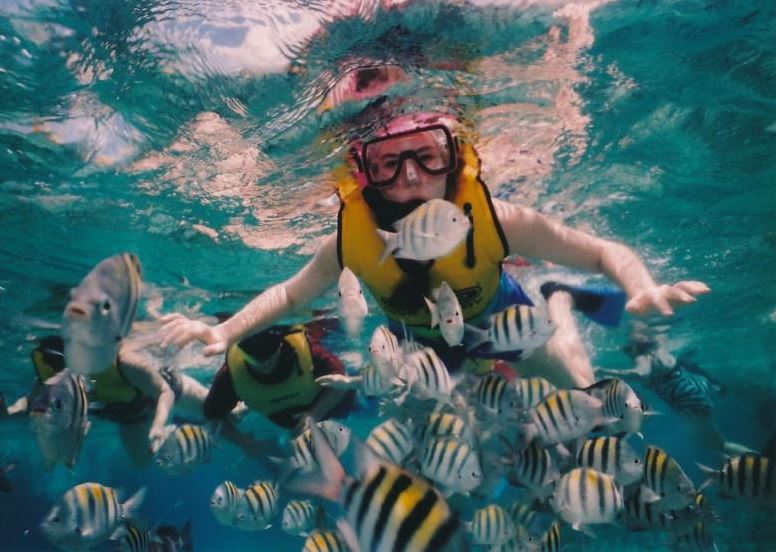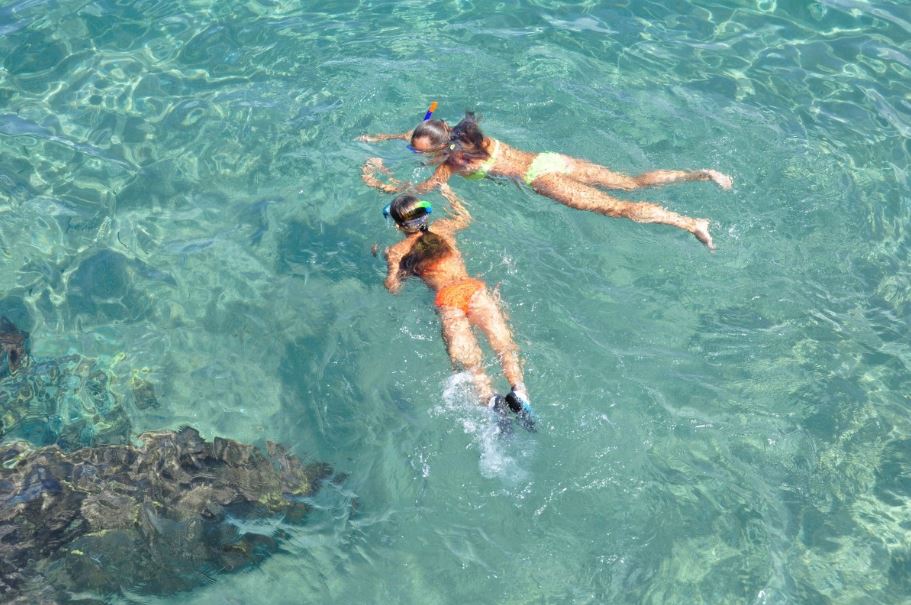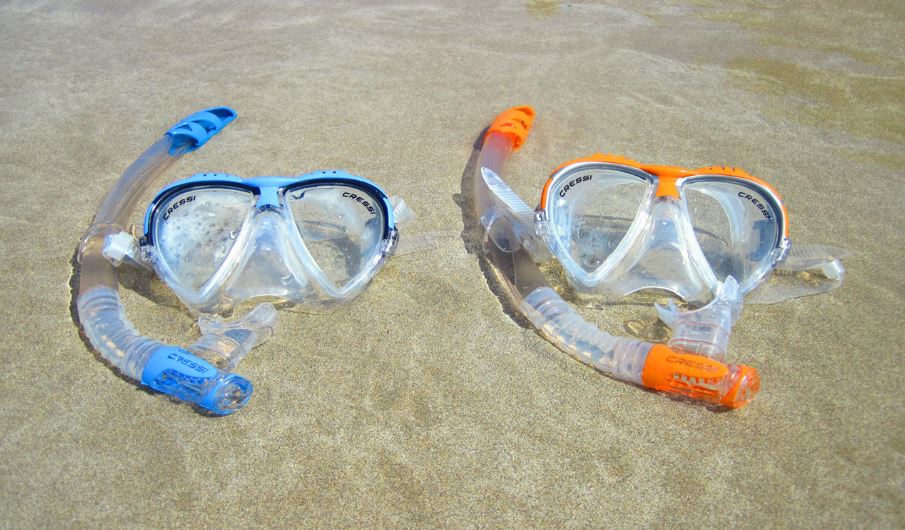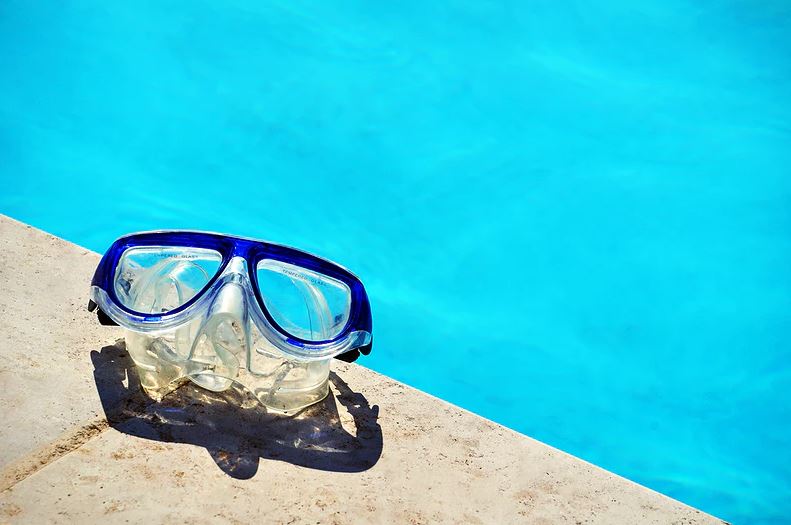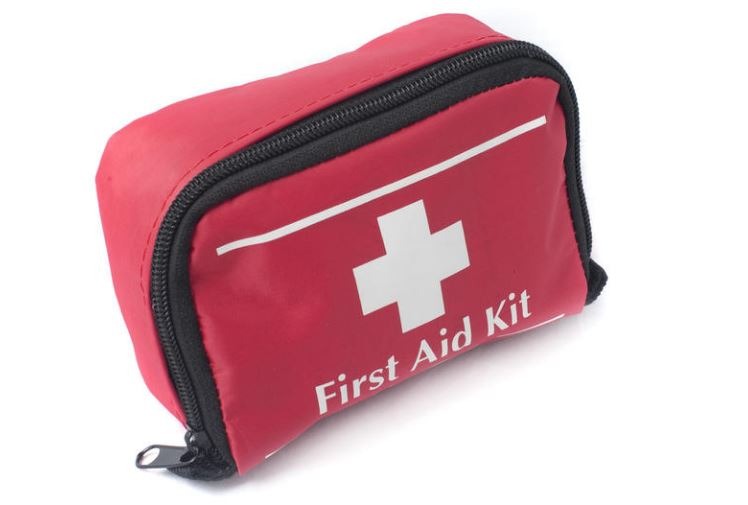Enjoying the beach during the summer with your family often means swimming, making sandcastles, collecting shells, and taking lots of photos. But if you’re looking to diversify, have you ever considered snorkeling? For the non-sporty parents, the idea of this can be intimidating, but snorkeling is actually one of the easiest summer water activities you can do with your children. All you need is a snorkel, mask, goggles, fins, and an adventurous spirit.
But besides these, of course, there are a few tips and tricks to make sure everyone will enjoy and be safe.
Should you go snorkeling with your kids?
When your children grow up, they will appreciate the memorable family trips they had when they were younger. Snorkeling is fun for everybody, including the parents. After all, experiencing breathing underwater like a fish is a cool experience.
If you’re wondering whether snorkeling is easy enough for kids, this is your assurance: if your child is old enough to swim, then they are old enough to snorkel. There is no minimum age for snorkeling , and many parents have taken their children as young as five years old. And yes, young kids can learn how to snorkel at their age.
On top of that, snorkeling is a relatively cheap hobby. All you need for equipment is a mask and a snorkel. Fins are highly recommended for making more powerful kicks, but it’s ultimately optional. If your kids will be snorkeling in water deeper than their height, then a floatation device is necessary. All these can be bought for around $100.
Also, a kid doesn’t have to be a swimmer to be able to snorkel.
Tips to Keep in Mind when Snorkeling with Kids
In case you’re still worried if snorkeling is a safe activity for your kids, read on to learn how to teach your children how to snorkel and how to make the experience safer.
Secure their gear.
Snorkeling requires masks and snorkels at use in the water so that they can breathe through their mouths. Start by securing their mask and snorkel that is appropriately sized for them. If you let them use your snorkel, then the mouthpiece, length, and diameter will be too large. Using a snorkel that is too big can make them quickly get winded. Indeed, the size of the snorkel must be proportional to their lung capacity. If it’s too large, the snorkeler can breathe in too much of the carbon dioxide previously breathed into the snorkel.
Alternatively, there’s a type of mask called a full-face snorkel mask, which covers the entire face and removes the need for a separate snorkel mouthpiece. You can find adult full-face masks and full-face masks designed to fit children’s faces. Full-faced masks are often cheaper than the combined price of a separate mask and snorkel. A dry snorkel is designed to keep water from entering the tube, even when the snorkel gets submerged, so your kid will less likely choke on water.
Fins are a big help, but there’s no need for them for your initial outings yet. When you start and practice, you must only try it on a spot where your child can stand in the water. Once they have cracked this stage, then they can use fins. Make sure they are of the right size, too.
Practice first in a bathtub or pool.
If your child has never worn a snorkeling mask, it’s a good idea to practice a snorkel set in the most controlled water environment – your bathtub or pool. Once you’re sure that the gear fits properly, your child can now practice using them. They will need to adjust to breathing using their mouth instead of their nose, and the perfect place to practice it is in a bathtub or pool. It may take some time getting used to, but it’s always better than putting them in the ocean to try.
If the mask leaks within seconds, that means the seal isn’t tight enough. This way, you can tighten the mask quickly to prevent an accident once you’re in the real waters. In some cases, the mask simply doesn’t fit your child’s facial structure, so you might need a new mask.
Protect exposed skin.
Sunburn, cuts, and scrapes are a big hazard when snorkeling. Keep your child safe from these injuries and painful sensations by protecting their exposed skin. They need to have some kind of UV protection.
Protect their skin by having them wear an anti-UV T-shirt or a rash guard. Make sure the clothing has a UPF rating, as regular clothes and rash guards don’t do a great job blocking the rays of the sun. Then, equip them with dive booties and fins to protect their feet if they accidentally step on a sea urchin. And of course, don’t forget to wear a broad-spectrum sunscreen that’s at least SPF 15 or higher. Apply sunscreen at least 30 minutes before heading out, so the skin has time to absorb it. This will decrease the likelihood of the product getting washed off by the water or rubbed off by clothing. Put sunscreen on the face, ears, hands, neck, and back of the neck, and the exposed parts in the arms and legs.
Choose a good spot.
Choosing the right snorkeling spot can make or break the snorkeling experience for your kids. Based on where you want to spend your vacation, look for nearby snorkeling spots in advance to see what’s best for your children.
There are countless family-friendly destinations and snorkeling spots from California to the Caribbean and even the rest of the world. You can even spot some hotels or resorts that offer gear rentals, so you don’t have to own your gear.
Make it easy for the family to pick a day with a warm, sunny day with calm seas and hopefully not many swimmers. When the currents are calm, it offers a greater chance for underwater visibility and fewer potential accidents that might worry parents of young kids. The great thing about snorkeling is that your kids don’t need to go far out to see vibrant coral, bands of rock, and schools of fish. Stay close to them and make sure they can stand on the seafloor where they are.
Let them wear a floatation device.
For your peace of mind and their safety, your child must use some kind of floatation device like inflatable floaties, a life vest, or a snorkel vest.
Even if your child is going to snorkel in shallow areas, kids are quick to get out of reach really fast. As they snorkel, they can get so enamored by the underwater sights, so they may keep swimming deeper and deeper. Also, there’s the chance that currents might be strong and pull your child out to the sea. Unless your kid is snorkeling in a shallow, confined pool of water, a floatation device is necessary.
Bring a first aid kit.
Bruises and scrapes are almost a guarantee if your kids are eager to explore the sea. There are times when your children may get injured, no matter how watchful you are. This is why it’s essential to have a first aid kit with you on your trip. Make sure it contains Band-Aids, bandages, antiseptic solution, ointment, and a pair of tweezers and hydrogen peroxide just in case they touch anything that could get in or under the skin. If your kid has allergies or potential allergies, make sure you have all the proper protocols with you should you need them.
Teach the kids some tips on how to snorkel.
Once the gear is all sorted out, make sure your kids know some tips about snorkeling.
First, teach them about body positioning. The proper body position for snorkeling is a relaxed position parallel to the surface of the water, with head, tilted 45 degrees upwards and hands to the side. The snorkel is designed to be perpendicular to the water’s surface, and it can only happen if the head is tilted slightly upwards. If the head is in a neutral position or if they tuck in their chin, water might enter the snorkel, and it can become a choking hazard.
To move while snorkeling, tell your child to kick gently with their fins. They don’t need to use arms for movement, which will also discourage touching. A snorkeler must never ever touch the corals or other marine life, as they can be dangerous. Always keep an eye out for your child, and don’t let them snorkel alone.

